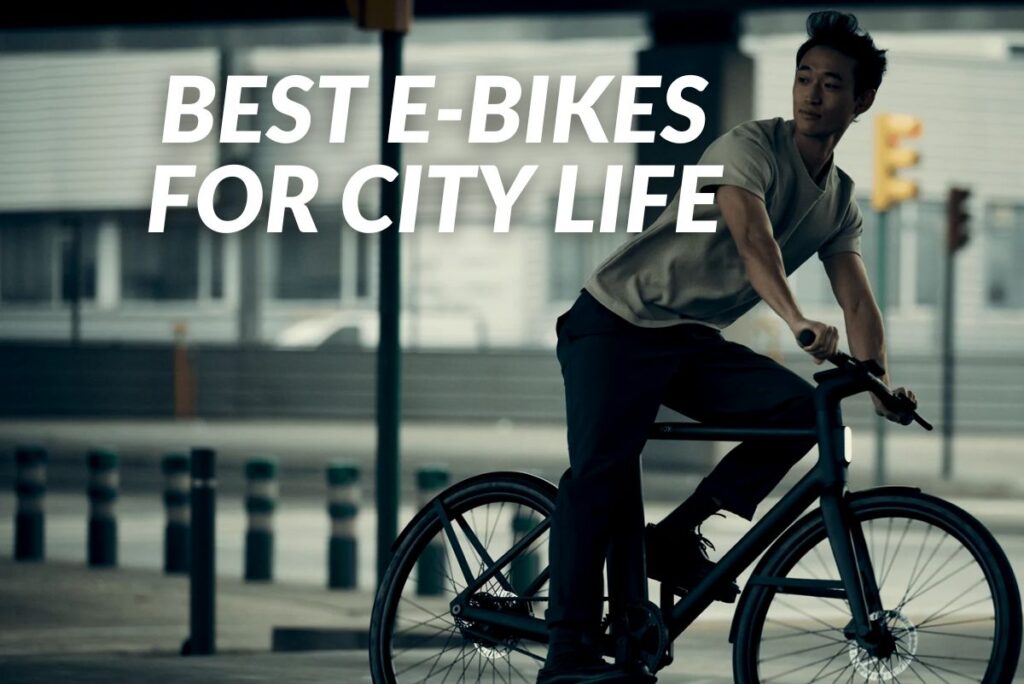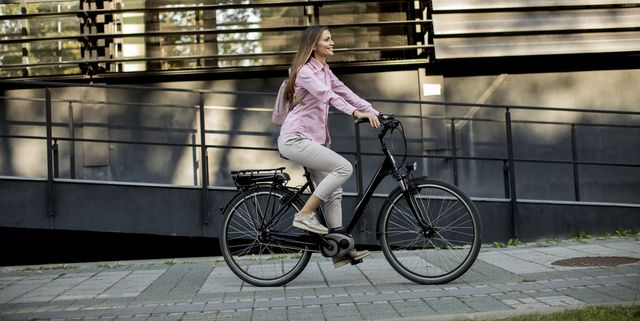Hey there, urban riders! Are you ready to take your electric bike commuting game to the next level? In our “Advanced E-Bike Riding Tips” section, we’ve got you covered with expert advice tailored specifically for those who are serious about e-biking in the city. From navigating busy streets to optimizing your commute for speed and efficiency, we’ll delve into the intricate details and techniques that will help you get the most out of your urban rides. Whether you’re an intermediate rider looking to enhance your skills or an advanced cyclist seeking to conquer new challenges, our articles are your go-to resource for comprehensive, in-depth information that you won’t find elsewhere. Let’s dive in and discover the secrets to mastering city commuting with an electric bike!

Choosing the Right Electric Bike for City Commuting
When it comes to choosing an electric bike for city commuting, there are a few factors to consider. First, you’ll want to think about the type of motor that best suits your needs. There are two main types: hub motors and mid-drive motors. Hub motors are typically found in the wheel and provide a smooth ride, while mid-drive motors are located near the cranks and offer better balance and handling.
Next, evaluate the battery power and range of the electric bike. This is especially important for city commuting, as you’ll want to make sure your bike can handle your daily commute without needing to recharge constantly. Look for bikes with higher voltage batteries and longer range estimates.
In addition to motor and battery considerations, look for a lightweight and compact design. City commuting often involves maneuvering through traffic and crowded streets, so having a bike that is easy to handle and store is essential. A lightweight electric bike will be easier to pedal if you need to switch to manual power, and a compact design will make it easier to navigate tight spaces or store in a small apartment.
Lastly, consider the cargo capacity of the electric bike. If you plan on carrying groceries, a backpack, or other items with you during your commute, make sure the bike has a sturdy rack or basket to accommodate your needs.
Essential Gear and Accessories for City Commuting
When it comes to city commuting with an electric bike, there are a few essential gear and accessories that can enhance your safety and overall experience. Incorporating visibility aids is crucial, especially in busy urban environments. Invest in lights, reflectors, and reflective clothing to make yourself more visible to drivers and pedestrians.
Choosing the right helmet is also essential for protecting your head in case of an accident. Look for a helmet that fits properly and provides adequate ventilation. Some helmets even come with built-in lights or reflective elements for added visibility.
Investing in a quality lock is another important step in securing your electric bike. Look for a lock that is resistant to cutting or tampering and consider using additional security measures, such as a cable lock or wheel lock.
Selecting appropriate clothing and footwear can also greatly enhance your comfort and safety while city commuting. Choose clothing that is breathable, weather-resistant, and bright-colored for increased visibility. Opt for closed-toe shoes with good grip to ensure stability while riding.
Safety Precautions for City Commuting
When it comes to city commuting with an electric bike, safety should always be a top priority. First and foremost, make sure you understand and follow all traffic laws and regulations. This includes obeying traffic signals, using hand signals when turning, and riding in the appropriate direction on one-way streets.
Staying alert and aware of your surroundings is crucial while city commuting. Keep an eye out for potential hazards, such as opened car doors or pedestrians stepping into the bike lane. Use your mirrors frequently to monitor traffic behind you and always be prepared to react quickly if necessary.
Using proper hand signals is essential for communicating your intentions to other road users. Signal your turns and lane changes clearly and make sure to give yourself enough time and space to make the maneuver safely.
Practicing defensive riding techniques can also greatly enhance your safety. Keep a safe distance from other vehicles, anticipate the actions of drivers, and be prepared to take evasive action if needed. Additionally, maintaining regular bike maintenance, such as checking tire pressure and ensuring brakes are in good working order, is essential for safe riding.
Planning Your City Commute
To ensure a smooth and efficient city commute with your electric bike, it’s important to plan your route in advance. Start by mapping out the most efficient route that avoids heavily congested areas and takes advantage of bike-friendly infrastructure, such as dedicated bike lanes or paths.
Identifying charging points along your route is also crucial, especially if your commute is longer than the battery range of your electric bike. Look for businesses or public spaces that offer charging stations where you can top up your battery if needed.
Lastly, it’s always a good idea to explore alternate transportation options for those days when riding your electric bike is not feasible. Familiarize yourself with public transportation routes and schedules, and consider having a backup plan in case of inclement weather or other unforeseen circumstances.

Managing Battery Life during City Commuting
Effective battery management is key to a successful city commute with an electric bike. To optimize power assist levels, familiarize yourself with the different modes available on your bike. Higher power levels will drain the battery more quickly, so choose a mode that suits the terrain and distance of your commute.
Conserving battery power through efficient riding techniques is also important. Avoid unnecessary acceleration or braking, as these actions use more power. Instead, try to maintain a steady pace and pedal along with the motor to extend your battery life.
Knowing when and where to recharge is crucial for uninterrupted city commuting. Plan your rides so that you have access to charging points when needed and consider investing in portable chargers or spare batteries for longer journeys.
Understanding battery maintenance and lifespan is also essential. Follow the manufacturer’s guidelines for proper charging and storage, and be aware that over time, the battery capacity may decrease. Regularly checking the health of your battery and seeking professional assistance if needed will help ensure its longevity.
Navigating Urban Traffic with an Electric Bike
Navigating urban traffic can be challenging, but with the right strategies, you can have a safe and smooth ride on your electric bike. One important tip is to blend in with the flow of traffic. Avoid weaving in and out of lanes or riding too close to parked cars. Instead, ride predictably and follow the same rules as other vehicles on the road.
Choosing the appropriate lane position is also crucial for your safety. If there is a dedicated bike lane, use it whenever possible. If not, ride in the right-hand lane and stay a safe distance away from parked cars and the curb.
Anticipating and reacting to common traffic scenarios is another vital skill. Be prepared for sudden lane changes, intersections, or opening car doors. Stay vigilant and always expect the unexpected.
Interacting with pedestrians and other cyclists is also important while navigating urban traffic. Slow down and give pedestrians the right of way at crosswalks, and use your bell or voice to alert them of your presence. When sharing bike lanes with other cyclists, follow the same principles of sharing the road with vehicles and maintain a safe distance.

Securing Your Electric Bike
Securing your electric bike properly is crucial to prevent theft and ensure peace of mind. Start by choosing the right lock system. Look for a sturdy lock that is resistant to cutting or picking. U-shaped locks or heavy-duty chain locks are often recommended for maximum security.
In addition to a lock, consider utilizing additional security measures. For example, you can use a cable lock to secure the wheels or saddle, or invest in a GPS tracker to locate your bike in case it gets stolen.
When parking your electric bike, always try to use designated areas. Look for bike racks or secure parking facilities in public places. This will not only provide better security but also prevent your bike from obstructing pedestrian walkways or causing inconvenience.
Finally, consider registering your bike with local authorities. Some cities or municipalities have bike registration programs that can help in recovering stolen bikes or provide proof of ownership if needed.
Dealing with Weather Conditions
When city commuting with an electric bike, you’ll likely encounter various weather conditions. It’s important to be prepared and take precautions to ensure a safe and comfortable ride.
Rain and wet surfaces can be challenging to navigate, so make sure you have the appropriate gear. Invest in waterproof clothing or a rain jacket to keep yourself dry and consider using fenders and mudguards to prevent water from splashing onto you or the bike.
Extreme temperatures, whether hot or cold, can also impact your ride. Dress in layers to adapt to changing temperatures and use moisture-wicking fabrics to stay dry. In hot weather, stay hydrated and take breaks to cool down if needed. In cold weather, wear appropriate insulation and consider using hand warmers or heated grips to keep your hands warm.
If you encounter snow or ice while city commuting, take extra precautions. Reduce your speed and avoid sudden movements or braking. Use studded tires or tire chains for better traction, and be mindful of slippery surfaces.
Interacting with Other Road Users
When navigating city traffic with your electric bike, it’s important to interact effectively and safely with other road users. Here are some tips for different scenarios:
To communicate effectively with motoris, use hand signals and make eye contact when possible. Signal your intentions clearly and give ample time for drivers to react. Be predictable and avoid sudden movements.
Understanding the behavior of pedestrians is also important. Slow down and give pedestrians the right of way at crosswalks. Use your bell or voice to alert them of your presence, especially in crowded areas.
When sharing bike lanes with other cyclists, be courteous and respectful. Follow the same principles of sharing the road as you would with vehicles. Maintain a safe distance and pass slower cyclists with caution.
Lastly, when coexisting with public transportation, be aware of their stops and routes. Give buses or trams enough space and avoid riding in their blind spots. Stay clear of train tracks and be mindful of other passengers when boarding or exiting public transportation.
Maintaining and Repairing Your Electric Bike
Proper maintenance and repair of your electric bike will ensure its longevity and optimal performance. Perform regular maintenance checks, including inspecting the tires for wear and tear, cleaning the chain and drivetrain, and checking the brakes for proper function. Consult the manufacturer’s guidelines for specific maintenance procedures.
Replace worn-out components in a timely manner. This includes brake pads, tires, and chains. Using worn-out components can compromise your safety and lead to further damage to the bike.
Troubleshoot common issues that may arise, such as electrical problems or motor malfunctions. Refer to the manufacturer’s troubleshooting guide or seek assistance from a professional if needed.
If you encounter more complex issues or are unsure how to proceed with repairs, it’s always a good idea to seek professional assistance. Local bike shops or certified electric bike specialists can provide expert advice and services to keep your bike in top shape.
By following these maintenance tips and seeking professional help when needed, you can extend the lifespan of your electric bike and continue to enjoy smooth and reliable city commutes.





